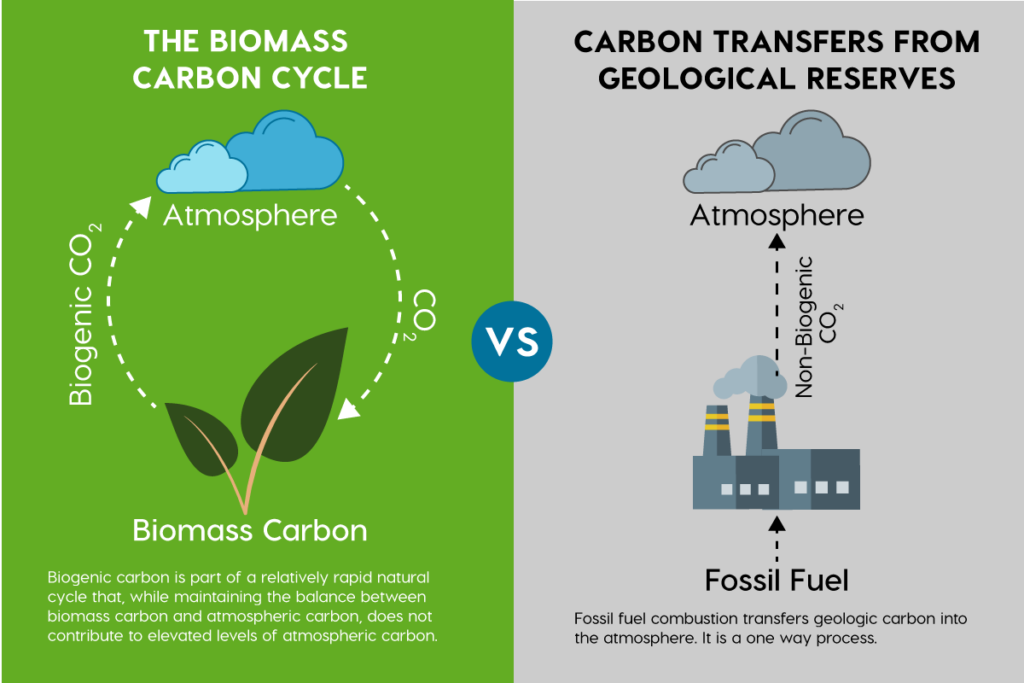11/10
How do plant-based products result in less carbon emissions compared to conventional products?
The answer lies in biogenic carbon.
Biogenic carbon emissions are released during the non-combustion processing or use of annual agricultural crops. Unlike the burning of fossil fuels, these emissions do not contribute to elevated levels of atmospheric carbon. Instead, these insignificant emissions from fermentation and other processes used in the development of bioproducts cycle out of the atmosphere when they are picked up by the next generation of agricultural crops.
The below diagram explains this process:

How does biogenic carbon play out in the lifecycle of a plant-based product? While materials derived from fossil fuels increase concentrations of carbon in our atmosphere, feedstocks from plant-based materials remove carbon from the atmosphere during their growing phase. The carbon taken up by plants during their growing phase is used to build these plant-based products and sequestered in their materials during their time as a useful consumer product.
This carbon does not become harmful pollution because it is recycled and doesn’t stay trapped in the atmosphere. Multiple scientific studies have stated that biogenic carbon emissions from such agricultural feedstock facilities are not contributing to long-term increases in atmospheric greenhouse gasses.
Biogenic carbon’s role in the bioeconomy
The U.S. Environmental Protection Agency (EPA) has an opportunity to grow the US bioeconomy by formally clarifying that biogenic carbon dioxide from the use of agricultural crops is not harmful pollution. Currently, EPA is the only regulatory body in the world that doesn’t recognize the differences between these emissions and those from fossil fuels. As a member of the Biogenic CO2 Coalition, PBPC is fighting for EPA to give fair, science-based treatment of annual farm crops and their emissions.
By providing this regulatory clarity, EPA could encourage further innovation within the U.S. bioeconomy – helping rural economies thrive by stimulating investment, creating green jobs, and encouraging growth in renewable products. Farmers, processors, and manufacturers would be more likely to make significant investments into new technology, rural development, and infrastructure once EPA recognizes the nature of natural carbon emissions from farm crops.

In addition to these economic impacts, increased production of plant-based products would bring significant environmental benefits, as we have discussed in previous posts. Expanded production of plant-based products promises to substantially reduce greenhouse gas emissions, improve water quality, divert waste from landfills, and augment soil health.
Biogenic carbon is all around us – it’s stored in the plants and soil that make up our planet’s ecology. Understanding its role in our environment can help us harness its power to create more climate friendly products and processes for years to come.



